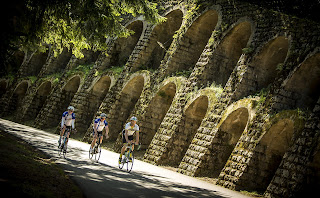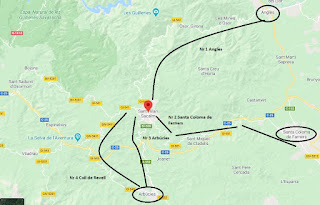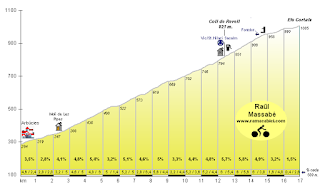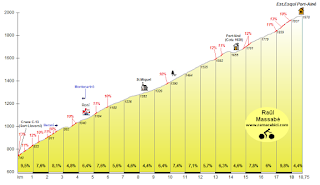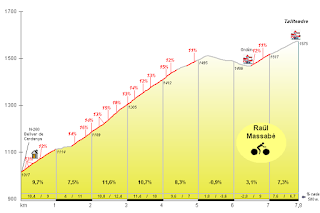Same as we did a few weeks ago with France, here we go with a list of the best roads for cycling in Spain. Same as in that post about France, let me remind that this is a subjective list.
Following roads are amazing, that's for sure, but I have no doubts that there are other similar ones and maybe better.
This is my choice:
- Desfiladero/Cañón de Añisclo (Huesca). This road was included in last Vuelta a España 2020 for the first time (5th stage). This is part of the spanish Pyrenees.
- Jaizkibel (Guipúzcoa). One of the most iconic climbs in all of the Basque Country, part of the route of Clásica de San Sebastián. The road, linking San Sebastián with Hondarribia is a fantastic balcony over the Cantabric sea. Also, steep and challenging climb!
- Coll de la Creueta. This is the first of 3 following roads being in Catalonia. Coll de la Creueta is an amazing road reaching almost 2000 mts.
- Costa Brava (Tossa-Sant Feliu de Guixols). 25 km of amazing coastal road, with very scarce traffic and very smooth surface. Also, very good weather all year long. This is part of the charm.
- Montserrat (Barcelona). This is an iconic mountain in Catalonia. Its unique shape has a magic touch, as the rounded forms suggest the mountain was under the sea for milions of years. The roads surrounding the mountain give different views depending on the angle. Fantastic.
- Sa Calobra (Mallorca). Possibly one of the most famous roads in Mallorca and the target of all the cyclists arriving to the spanish island. The odd thing about this terrific climb is that you have to descend to the coast to climb it opposite direction.
- Far de Formentor (Mallorca). Another iconic destination in Mallorca island. The road heading to the Lighthouse (meaning for Far) is just stunning.
- Portillo de Lunada (Cantabria).This is a very long and scenic climb in Cantabria province (just beside Basque country). The perfect loop in the area includes Alisas, Ason and Lunada in hardly 100 km and 2300 mts elevation.
- Desfiladero de la Hermida (Cantabria) This road 21 km long is also located in Cantabria and it is the longest gorge in Spain. You get there from the twisty road N-621. The vertical walls get at some points 600 mts. Amazing.
- El Torcal de Antequera. This place in Malaga province was declared World Heritage site by UNESCO. It was included in Vuelta a España route in 2017.
Sure there are other great roads for cycling in Spain, as this is cycling paradise.
Which roads would you include in the list?

























